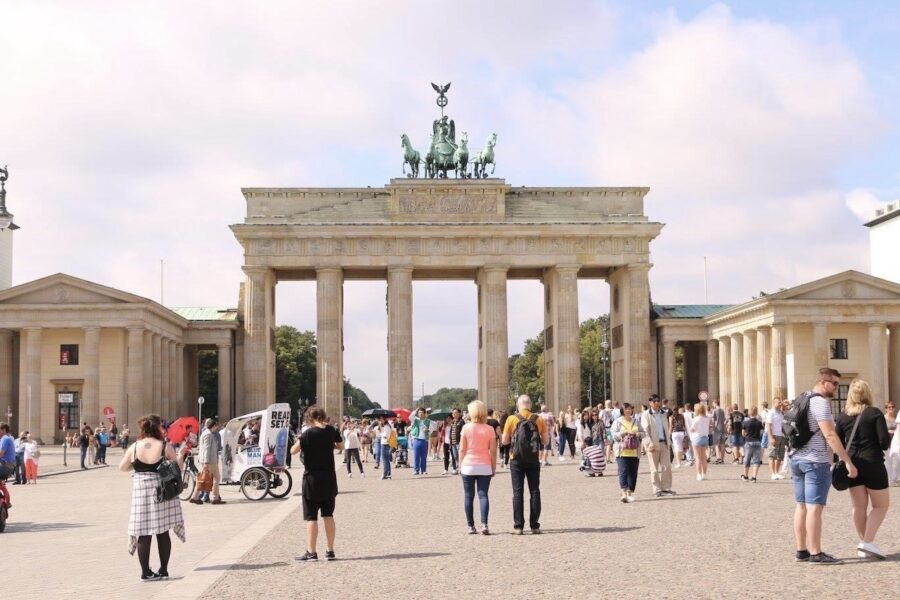Share this Post
This article may contain affiliate links. For full information, please see our disclosure here.
Want to take your kids on a road trip on your own?
Need some help with the planning and preparation for your endeavour?
Don’t know what’s required for a road trip to Europe (from the UK)?
As with any other trip or holiday, first you need to set your travel dates as well as a travel budget. They will ultimately define the length of your road trip as well as your route.
A road trip is anything from a day to a year or beyond; with one or multiple destinations.
The advice and practical tips I provide in this article can be applied to any road trip and adjusted where necessary.
Investing time and effort into the planning and preparation phase of your road trip will result in a smooth execution.
Where would you like to go and what would you like to see and do?
SET YOUR TRAVEL DATES
When do you want to embark on your road trip?
If you have school-age children, you will want to stick to school holidays. Check your school’s term dates well in advance so that you can start planning as early as is possible.
If you are planning a summer road trip, start thinking about your destinations at the beginning of the year and planning in earnest around March or April.
There is nothing wrong with planning a road trip at the last minute – as long as you are up for the challenge, that is!
I planned my first solo road trip with my kids – which took us across Europe over a 7-week period – barely 3 weeks in advance. It was a last-minute idea so I didn’t have much choice.
Since we were mostly visiting and staying with friends and family, the actual challenge was planning a route so that I wouldn’t zig-zag across Germany, Austria and the Czech Republic but would manage to drive in a loop instead.
It all worked out perfectly in the end, but I highly recommend planning a road trip well in advance.
Nowadays, I start planning our big summer road trips 4-6 months before we leave.
They take us across multiple European countries over a 6-week period. However, we also undertake shorter trips nearer to home in the UK.
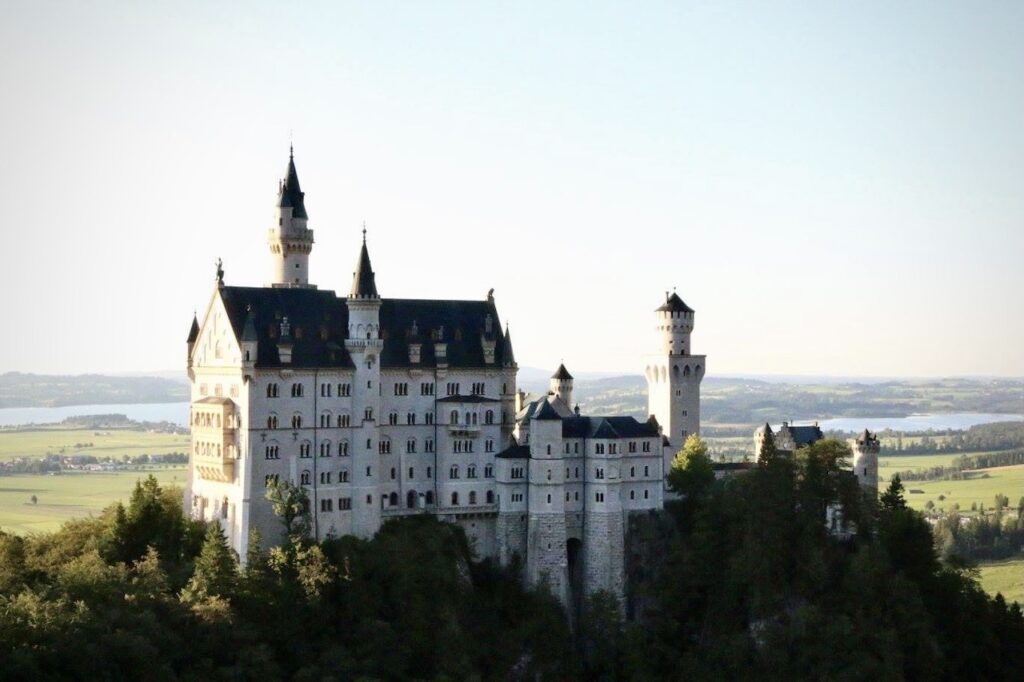
DEFINE YOUR TRAVEL BUDGET
How much money will you have available to spend on your road trip?
Saving up for it in good time will enable you to have the best possible experience.
Your biggest expenses will be accommodation, food, attractions and activities, and the inevitable car fuel costs. And not to forget the gear and equipment as well as insurance policies that you will need to purchase before your trip.
Budget-wise, everyone will have different priorities. Mine are wholesome nutrition, attractions and activities, accommodation and fuel costs; in this order.
Self-catering will keep food costs down, so consider booking accommodation which is equipped with a kitchenette.
Also, devouring your own packed lunches will not only save you money, but it will also allow for greater flexibility in planning your days out.
Fun Fact & Top Tip: As we discovered on our very first summer road trip, you must budget for (almost daily!) ice cream. It’s fascinating how you can gauge the cost of living of a place based on the price for a scoop of ice cream!
Because we crave adventure, I am content with the extra energy and time it takes to prepare packed lunches so we can splurge on outdoor activities instead. They add up very quickly when you have adventurous kids!
PLAN YOUR ROUTE
Pick your destinations
Once you have determined your travel dates and budget, let’s plan your route! While this appears to be a daunting task at first, it’ll soon become the most rewarding.
Pick a region or a country you are intrigued to visit and jot down all the places you would love to explore. Getting a vague idea is sufficient at this stage as you will unearth all there is to see and do during the Brainstorming Process that will follow.
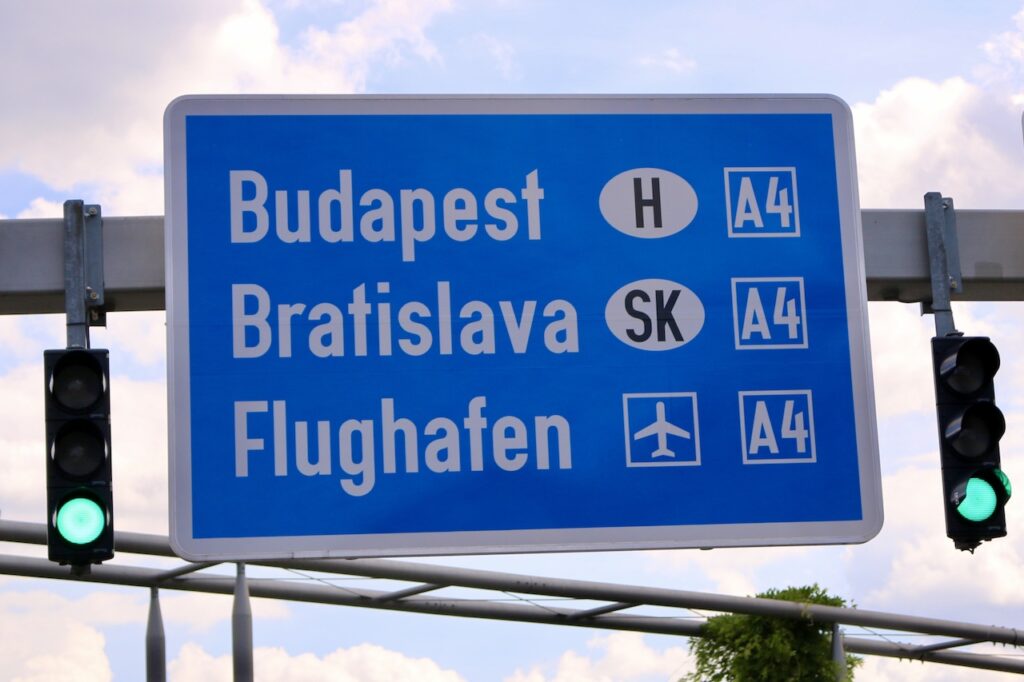
Brainstorm What To See & Do
Now that you have decided which country or region to explore, next up is finding out all about the sights and attractions in the area as well as along the way.
Over the past few years we have sought out the great outdoors in various regions of the Alps, the Scottish Highlands, Snowdonia and England and (re)discovered our love for the mountains.
The following travel guide books have shaped our epic road trips:
Slovenia:
- Rough Guides’ travel guide
- Cicerone’s invaluable walking guide which I think publish the best walking guide books out there!
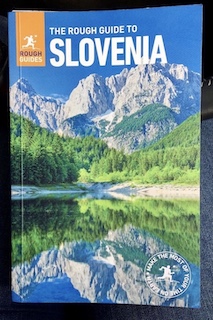
Austria:
- DK Eyewitness’ travel guide
- Lonely Planet’s travel guide
- Marco Polo’s Pocket Guide for Salzburg and surroundings.
Snowdonia:
Scotland:
- Scotland The Best – you’ll only ever need one travel guide!
I commend how this travel guide is structured – listing everything worthwhile seeing, doing or experiencing with a star rating for exceptional recommendations.
From insider information about the best scenery – such as awe-inspiring hiking trails or spectacular waterfalls – to recommendations for best restaurants, accommodation and even campsites.
Whatever you’ll be looking for, it’s in there. (And if it’s not in there, then it’s probably not worth exploring.)
- Scotland the Best 100 Places for some visual inspiration.
I planned our entire 6-week road trip to the Scottish Highlands with these two travel guides, including our tour of the North Coast 500.
- The Rough Guide to the North Coast 500 looks like a great resource for anyone wanting to explore the North Coast 500 (which wasn’t yet available during our road trip; so I haven’t read it.)
While devouring travel guides, make a list of everything that sounds or looks vaguely interesting. You can go overboard here as you will narrow it down later on.

Top Tip: Jot down all the places and natural attractions in Google Maps. This will make your life easier once you set out to create your plan for each day of your road trip.
How to create a map displaying your points of interest?
Log on to your gmail.com account and go to: Maps, Menu, Your Places, Maps, Create Map, Give your map a Title and Save. Search a place in the Search bar, and click Add to Map. Repeat the last step for every point of interest.
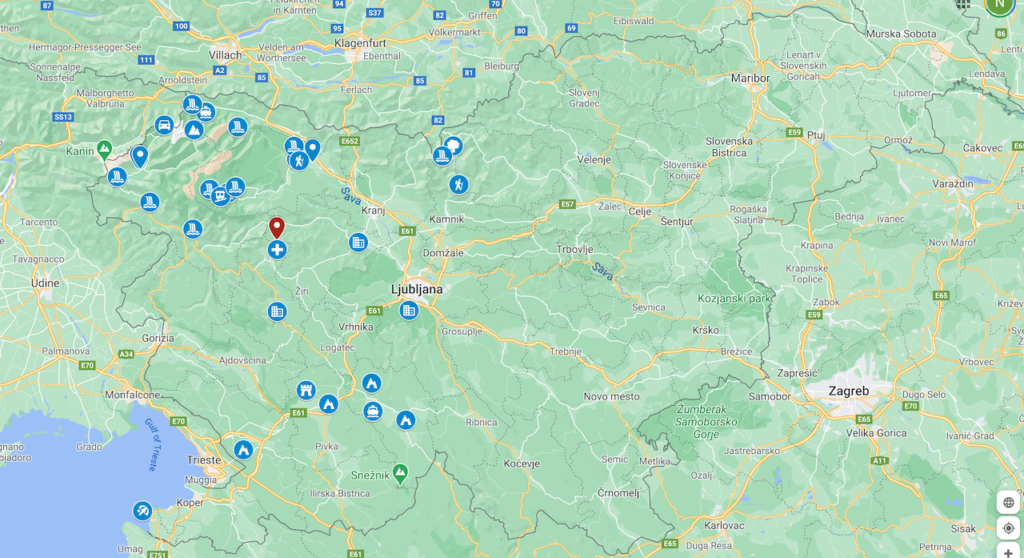
Once you have compiled a list of things to see and do, group them in categories (a bit of organisation goes a long way here!).
At this stage, you will need to take into consideration what you are logistically and physically capable of achieving, not least if adventuring solo with kids.
For example, I really want to go on a Via Ferrata hiking trip with my kids, but I can’t simply select a route and go for it. So, this will involve deeper research as well as result in hiring a local guide.
For visiting towns and cities, I create categories such as:
Museums, Castles, Churches, Special Sights, Sight-seeing Tours, Culture & Architecture, Restaurants, Playgrounds, Parks.

For the great outdoors, the categories divide into these:
Hiking Trails, Gorges/Waterfalls, Caves, Lakes, Mountain Peaks, Parks & Valleys, High Alpine Roads/Mountain Passes, Rock Climbing, Water Sports, Cycling, Local Festivals, Water Parks & Wild Swimming, Other.
Categorising everything will come in handy especially when you are trying to remember whether a place on your list is indeed a mountain or actually a lake!
Next, you will need to narrow it all down based on your deeper research.
There are two ways of doing this.
Either by erasing the items from your list that you don’t want to visit or by prioritising them instead. I do the latter.
Once you have finalised your destinations, simply join the dots. Here, it is wise to avoid driving in zig-zags to preserve precious time and resources.
Working out your ideal route may require some juggling around if you have many destinations to cover. Don’t get hung up about this as you will inevitably deviate from your draft when booking your accommodation or uncovering new information.
If you are lucky enough to travel by campervan or motorhome, you’ll be more flexible and spontaneous about your exact route. In this case, make sure to check out camp sites along your intended route unless you are visiting a country where wild-camping is permitted.
Top Tip: When driving in mountainous areas, make sure you take the driving times provided by your SatNav system with a pinch of salt. As a rule of thumb, multiply it by 1.5x to 2x to obtain a more realistic result.
Book your accommodation
At times, booking your accommodation will determine your route especially during busy seasons or if you leave it too late. Therefore, it is important to plan ahead and book your accommodation in a timely manner. If you are planning to visit friends or family on your trip, inform them as early as possible of your intentions so that the both of you can plan ahead accordingly.
Our experience: I had to move dates around on several occasions due to accommodation issues.
The most extreme scenario ensued when I gave up altogether at trying to book accommodation in the Scottish Highlands.
I had left it too late by attempting to make bookings in June for a trip in August. Although I was able to snap up what must have been the last place on the Isle of Skye, I had less luck and energy to keep on searching for more than 10 other places across the country.
In the end, I decided to buy a car roof box and a smaller tent so that we could camp instead. Although we had the most amazing time in Scotland, I do not recommend camping on a road trip if you plan on moving on every few days.
You simply spend too much time camping rather than road tripping. So, unless you want to camp (and even if you do want to camp), make sure you book all your accommodation as far in advance as possible.
Get Your Car Ready For A Road Trip
Car Essentials
Tackling these vital points will ensure a smooth and safe road trip. Do not set off before you (and your car!) are ready.
1. Perform a car health-check
At least two weeks before your road trip, get a car health-check performed at your garage.
Inform them that you are planning a road trip as well as the approximate mileage you intend to cover.
Advise them to also check the profile on your tyres to ensure they are set to last for the entirety of your journey.
They will carry out the necessary checks and advice on anything that needs fixing before the trip.
This is an absolute must and will give you peace of mind for your trip ahead.
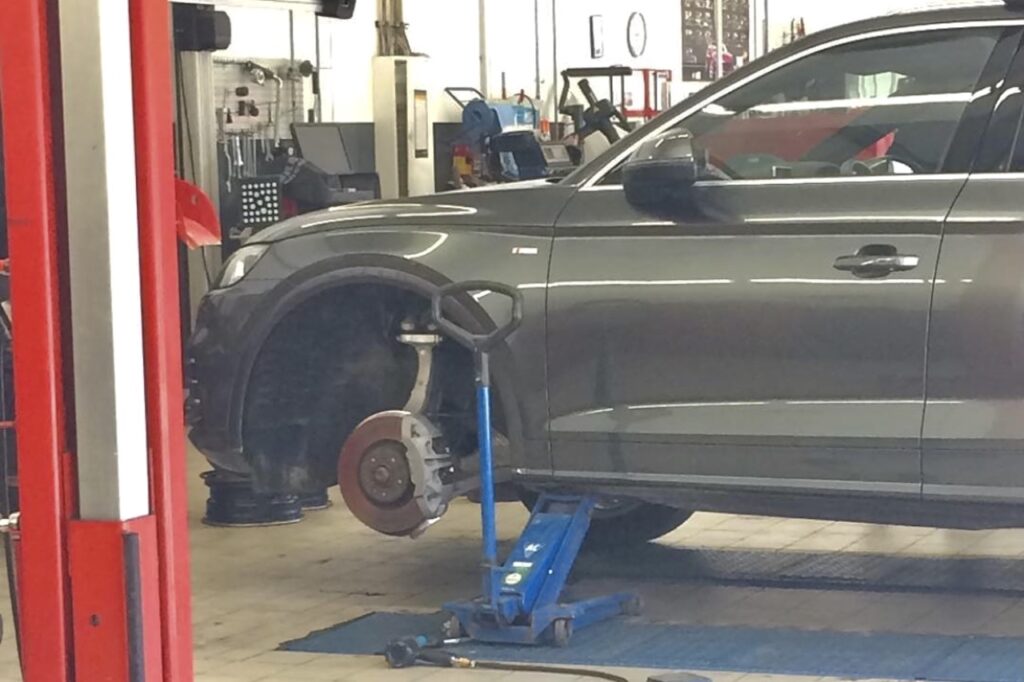
2. Get an EU car travel kit (if applicable)
Carrying an EU car travel kit is compulsory in most European countries.
It contains items such as a warning triangle, hi-vis vest and more. The AA provides a handy PDF guide for a compulsory kit.
Whereas AA’s Euro Travel kit can be purchased here.
If travelling via France, you are also required to carry breathalysers with you.
You can either get some French NF Certified breathalysers here or get a complete French Travel Kit here which already contains breathalysers.
3. Get A Head Lamp Beam Converter Kit (if applicable)
When travelling to mainland Europe, the legal requirement is to ‘not dazzle oncoming drivers’ rather than specifically to adjust/convert the headlamp beam pattern. Without adjustment the dipped beam will dazzle oncoming drivers and this could result in a fine.’
In the Travel Kits mentioned above, these are already included.
Alternatively, you can get a pair here.
4. UK Magnetic Plate (if applicable)
From 28 September 2021, you need a UK sticker instead of a GB sticker. If you are embarking on a European road trip from UK and do not have a UK sign on your license plate, you will need a UK sticker on the rear of your car.
UK stickers are included in most EU Travel Kits – if not, you can get a magnetic UK plate here.
More information can be found on the government website.
5. First Aid Kit
While carrying a first-aid kit is compulsory in some European countries, it is recommended in others and not required in few. The useful PDF document by the AA mentioned above provides further details on most European countries.
Even if this isn’t a requirement in the country you are travelling to, I highly recommend to always carry one. AA’s Standard First Aid Kit can be purchased here.
6. Keep an electric tyre inflator in the car
Owning an electric tyre inflator can be a life-saver. If you lose tyre pressure and aren’t anywhere near a petrol station, having one (or not) can make (or break) your day.
Some break-down kits – such as this and this one from the AA – already contain tyre inflators. Hence, check before purchasing. I have been using this tyre inflator for the past few years and it has saved our day on more than 5 occasions.
7. Keep a torch in the car
This is a top tip I recommend to everyone.
Rather than listing a thousand reasons when you might need one, I’ll list only one: You never know when you’ll need one – so just take one with you (and let me know when it came in handy).
I highly recommend investing in a top quality torch – you can’t go wrong with Ledlenser which I’ve been using for several years now.
8. Fill-up screen wash
Even if your screen wash was filled up during the car health check-up at the garage, double-check and refill it if needed.
9. Check kids’ car seats
Kids grow fast. Therefore it’s vital to ensure that their car seats will last them for the duration of your road trip; or upgrade them if necessary.
10. Upgrade car insurance and roadside assistance cover (if applicable)
Before setting off on a road trip abroad, you will need to upgrade your car insurance policy as well as roadside assistance cover to cover the relevant additional countries unless they are already included in your policy.
These covers need to commence from the first day of your trip and last until the last day. In order to be on the safe side – in case of any delays on your return journey – consider extending them for an additional day or two past your planned return date.

11. Driving license, car registration documents, insurance & roadside assistance details
Don’t forget to take your driving license, car registration documents, insurance & road-side assistance details with you. Have them handy at all times.
Leave a hard copy in the car and do not solely rely on storing contact numbers on your mobile phone. They need to be easily accessible in case of an incident.
Now that the UK has left the EU, please note that UK motorists need a car insurance ‘green card’ to drive in Europe in addition to their Certificate of Motor Insurance and the log book (V5C) for the vehicle. More information can be found on the UK government website.
It’s not a disaster if you forget to pack a non-essential item; but possessing a “healthy” car, the relevant documents and a compulsory travel kit are vital for your safety and thus an epic road trip!
Car non-essentials
(that make life easier)
1. Fit a roof box
Whether you need a roof box or not will depend on how big your car is and how much you intend to pack. It is a very handy travel kit to own as you practically double your boot space.
Our experience: While we managed without a roof box on our first summer road trip in 2016, we bought one for our trip to the Scottish Highlands the following year.
I had left it too late to book accommodation. Hence, we had to take more stuff because I decided that we would camp instead.
Made by the world’s biggest car-rack brand, I highly recommend this roof box. Be aware that they come in different sizes so make sure to pick a suitable one for your car.
When buying a roof box, you will also need to acquire some roof bars. Simply enter your UK car registration number here to find suitable ones for your car.
Depending on the roof box and accessories you choose, you will need to budget about £500 for the luxury of having extra storage space.
One thing to note when travelling with a roof box is the additional height it adds to your car. Keep this in mind when booking your Channel crossing via train or ferry. A roof box will also limit access to some parking garages but this is only an issue in cities.
2. Fit a cycle carrier
Taking bikes on a road trip; why not?! They’ll be great fun to experience some local adventures en route.
However, if you plan to cycle only once or twice during your road trip, you’ll be better off renting bikes onsite rather than dragging them along.
When looking into bike racks, bear in mind that there a three types available:
- Roof mounted
- Rear mounted
- Tow bar mounted
For more information, check out this article by Cycling UK.
I highly recommend Thule’s roof bike racks of which we have two (soon to add a third).
A list of all top quality Thule bike racks can be found here.
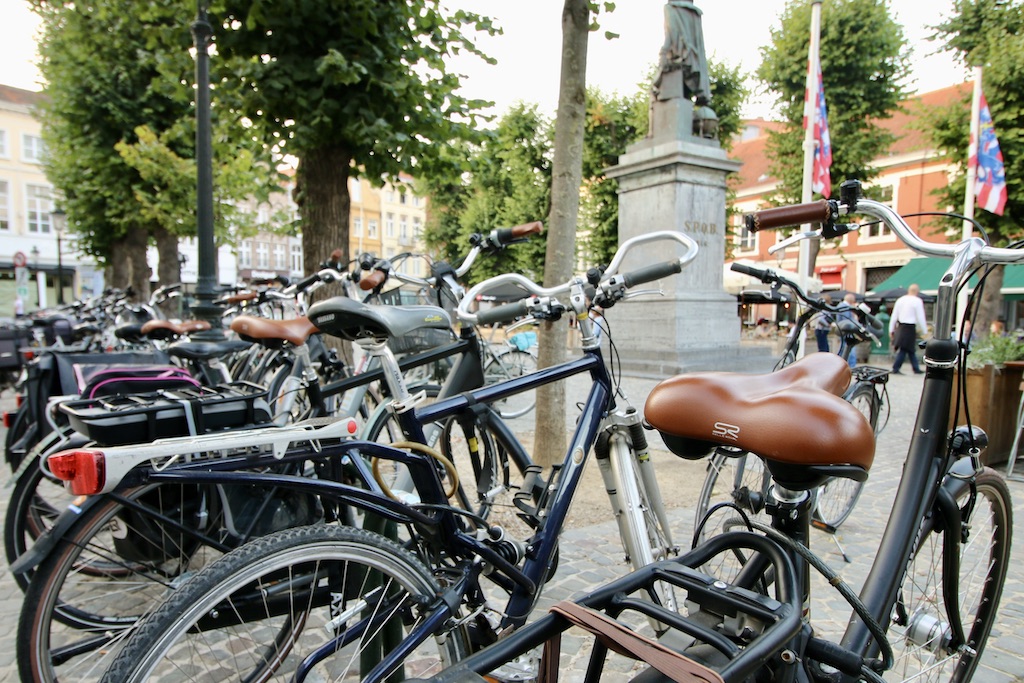
3. Organise back seats to keep kids entertained
Keeping the kids’ stuff organised in the back seats will keep them content and save your sanity. I find these back seat car organisers indispensable (and they are also great at preventing dirty shoes being rubbed off on the back of the seats).
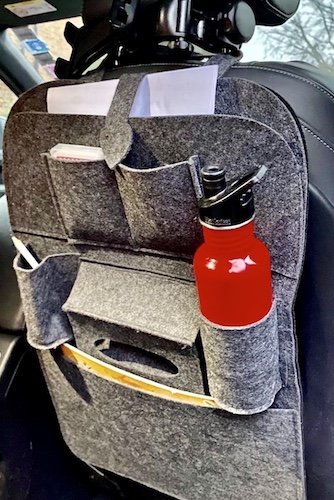
They come in a pack of two perfect for two little adventurers.
Obtain travel insurance before your trip
Make sure to obtain travel insurance cover in time for your road trip. You will also need to verify that your policy covers any extreme sports that you plan to undertake. (Rock-climbing and rafting, for example, are defined as extreme sports in some policies).
Corresponding with the car insurance and roadside assistance covers highlighted above, also consider extending your travel insurance cover for an additional day or two past your planned return date. This will ensure that you are covered in case of any delays on your return journey.
Book Channel crossing either via Eurotunnel or by ferry
(if applicable)
Driving to mainland Europe…? Make sure to book your Channel crossing on time. Popular travel dates sell out months in advance.
I prefer taking the Eurotunnel simply because it’s fast and straight-forward (and also because I get sea-sick!).
During the 35-minute journey, you stay in your car and then get off in Calais, France to continue your trip (on the right side of the road!). Toilets are available on-board. It’s super quick and hassle-free.
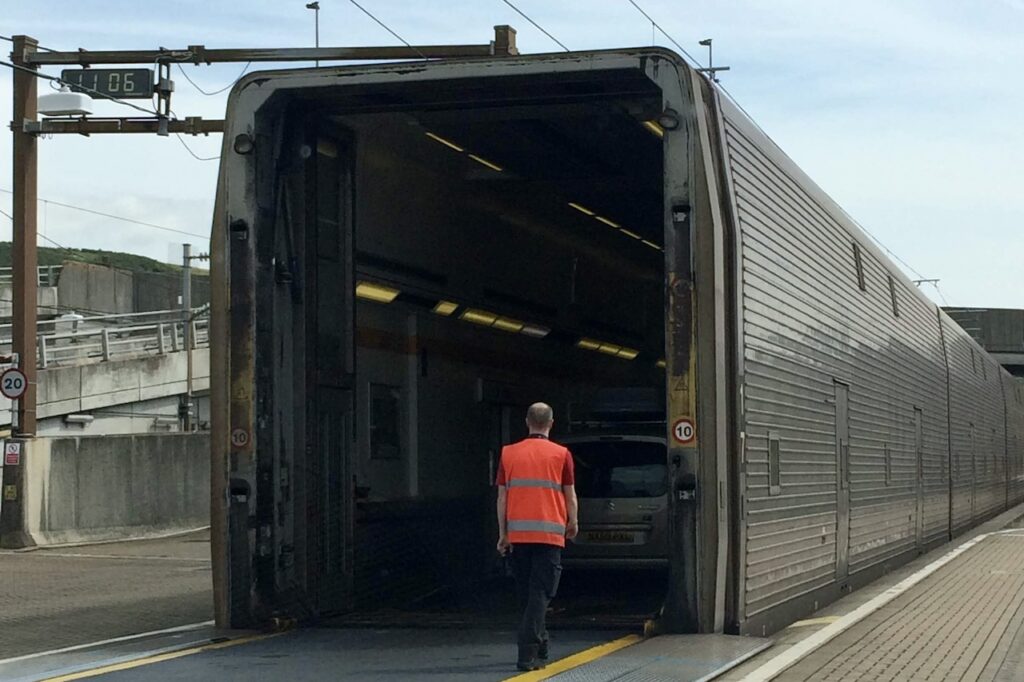
Top Tip: If you arrive too early for your check-in – check with the staff whether you can get on an earlier train. Chances are that you’ll be offered to continue on your journey sooner.
FINAL WORDS
Wherever you are off to and whatever you are up to, a bit of (OK, “proper”) planning and preparation will go a long way.
So, do invest some time and energy into it before your road trip so that you can reap the rewards while on the road and make the most wonderful and lasting memories with your kids.
Happy Planning!
Related Posts
- Camping Essentials: Complete Checklist for Camping with Kids
- Top 20 Family Outdoor Activities in Wales
- 12 Epic Reasons to Solo Road Trip with Kids (and 5 Against)
- Top 11 Road Trip Activities for Kids
- How to Get Your Car Ready for a Road Trip
- The Ultimate Family Road Trip Packing List
Share this Post
